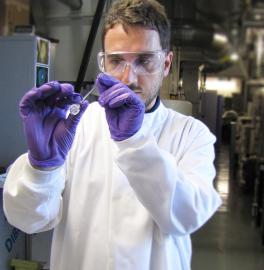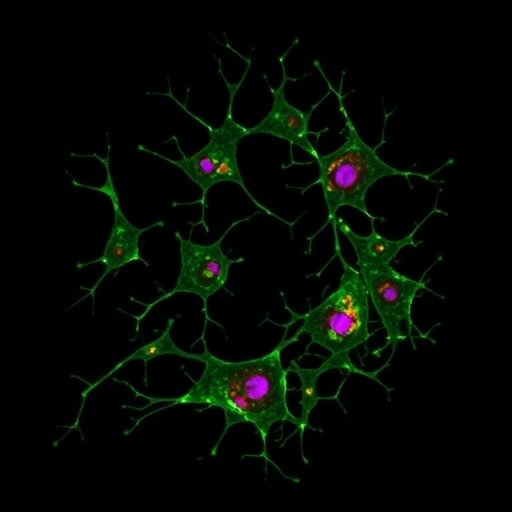
Credit: University of Southampton
Researchers from the Zepler Institute for Photonics and Nanoelectronics at the University of Southampton have demonstrated a new leap in hollow-core fibre performance, underlining the technology’s potential to soon eclipse current optical fibres.
Hollow-core fibres replace conventional glass cores with gas or a vacuum to enable unique properties including faster light speed and reduced sensitivity to environmental variations.
The novel technology, which is being advanced in the Zepler Institute’s renowned Optoelectronics Research Centre (ORC), is believed able to reach lower loss and higher data transmission capacity than all-solid glass fibres, with current research accelerating models toward this peak performance.
Southampton researchers and collaborators are presenting the latest findings in San Diego this week in two high profile post-deadline papers at OFC 2020, the world’s largest optical fibre communication conference.
The newest hollow-core fibres attenuate the light traveling through it by 50% less than the previous record, reported only six months ago. The maximum transmission length at which data can be relayed in such revolutionary fibres has also doubled.
Thanks to an innovative design proposed at the ORC, in the space of 18 months the attenuation in data-transmitting hollow-core fibres has been reduced by over a factor of 10, from 3.5dB/km to only 0.28 dB/km within a factor of two of the attenuation of conventional all-glass fibre technology. At the same time, the maximum transmission distance at which large bandwidth data streams can be transmitted through an air-core has been improved by over 10 times, from 75 to 750km.
Professor Francesco Poletti, Head of the ORC’s hollow core fibre group, says: “Transmitting light in an air core rather than a glass core presents many advantages which could revolutionise optical communications as we know them. These latest results further reduce the performance gap between hollow core fibre and mainstream optical fibre technology, and the whole team is really excited by the prospect of the additional significant improvements that seem possible, according to modelling.
Latency, which is the round-trip time for communications, is becoming as important as bandwidth for the new digital economy. Network latency creates a delay between sensing and its response, causing sickness in AR/VR users, loss of fidelity in remote surgery and accidents in autonomous systems. These fibres deliver a vital 30% reduction in round-trip data transmission times and could enable the next generation of connected real-time digital applications, from smart manufacturing and advanced healthcare to the entertainment.”
The considerable improvements in attenuation and transmission distance demonstrated in these two works open up the possibility to target longer reach distances, edging close to the 1,000km span of typical long distance long haul terrestrial data transmission links.
Southampton researchers are pushing the boundaries of hollow-core performance in several major research programmes, including the European Research Council funded LightPipe and the Engineering and Physical Sciences Research Council (EPSRC) funded Airguide Photonics.
The team are working in close collaboration with one of the leading groups in advanced optical communications at the Politecnico di Torino, led by Professor Pierluigi Poggiolini, and ORC spinout Lumenisity.
###
Media Contact
Steve Bates
[email protected]
0238-059-3212




